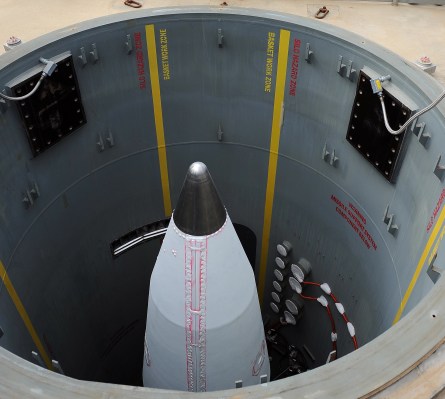North Korean leader Kim Jong-Un visits a long-range artillery sub-unit of the Korean People's Army Unit 641, whose mission is to strike Baengnyeong Island of South Korea in the western sector of the front line, in this handout picture released on March 11, 2013.
The Obama Administration took the offense on missile defense Friday, saying it will fatten up the nation’s thin missile-defense shield by nearly 50% to defend against a possible North Korean attack.
The added missiles were part of the Bush Administration’s original plan, but President Obama halted their deployment in April 2009, three months after his inauguration.
The announcement came about 72 hours after the U.S. military’s top strategic commander said “we are confident we could defeat a threat from North Korea today.”
But the concern isn’t today, but tomorrow. The additional interceptors won’t all be deployed for four years, and North Korea – if the past is any guide – won’t be curbing its missile and nuclear ambitions. Pyongyang recently threatened to attack the U.S. with a nuclear weapon.
“We will strengthen homeland missile defense by deploying 14 additional ground-based interceptors, GBIs, at Fort Greely, Alaska,” Defense Secretary Chuck Hagel said. “These additional GBIs will provide a nearly 50% increase in our missile defense capability.” There are currently 26 interceptors based in Alaska, and four at California’s Vandenberg Air Force Base.
There is next to no chance that the North Koreans have developed a nuclear weapon small enough to be fitted atop a Pacific-crossing intercontinental ballistic missile. And there is next to no chance it has such a missile. “But it’s not zero,” a Pentagon official says. “This is pretty cheap insurance.”
“Nations like North Korea and Iran are committed to building long-range ballistic missiles and are undertaking robust nuclear weapons programs,” Rep. Mike Turner, R-Ohio, who heads the House Armed Services subcommittee on tactical air and land forces, said. “No longer can the Administration ignore these threats. The building of a missile defense site on the East Coast is the next logical and prudent step to ensure we can counter the rising threat to the homeland.”
Then-defense secretary Robert Gates announced the scaled-back shield four years ago. “In the area of missile defense, we will restructure the program to focus on the rogue-state and theater-missile threat,” he said. “We will not increase the number of current ground-based interceptors in Alaska, as had been planned, but we will continue to robustly fund continued research and development to improve the capability we already have to defend against long-range rogue missile threats, a threat North Korea’s missile launch this past weekend reminds us is real.”

A ground-based interceptor missile silo at Fort Greeley, Alaska.
Gates said that even if that 2009 North Korean launch had succeeded, there was no need at the time for the additional interceptors. “If it had been an intercontinental ballistic missile, the ground-based interceptors in Alaska could have taken care of that challenge,” he said. “We’re in a pretty good place in terms with respect to the rogue-country missile threat.”
But Pyongyang’s continued nuclear and missile ambitions – and its increasingly bizarre behavior – make the additional intercepts a prudent step, defense officials said Friday.
The nation’s top strategic commander said as recently as Tuesday that the existing interceptor force was sufficient. “I am satisfied that we can defend against a limited attack from North Korea today with 30,” Air Force General General Robert Kehler, chief of the U.S. Strategic Command, told the Senate Armed Services Committee, without defining just what “limited” means. “We are confident we could defeat a threat from North Korea today.”
But he added there were growing reasons for concern. “Given the potential progress we are seeing from them, we are considering right now whether we need to take additional steps,” Kehler said, telegraphing Friday’s announcement. “Their activities have our attention, and it has our concern.”


